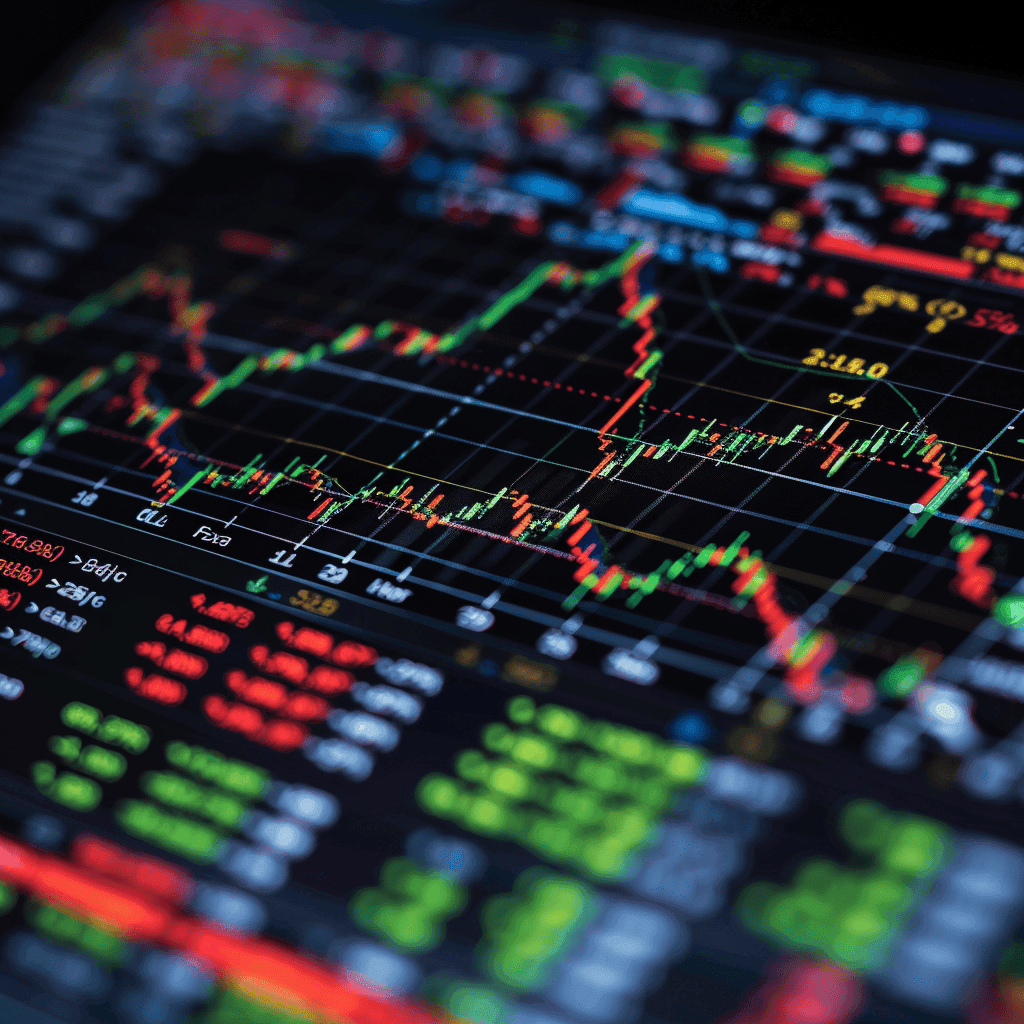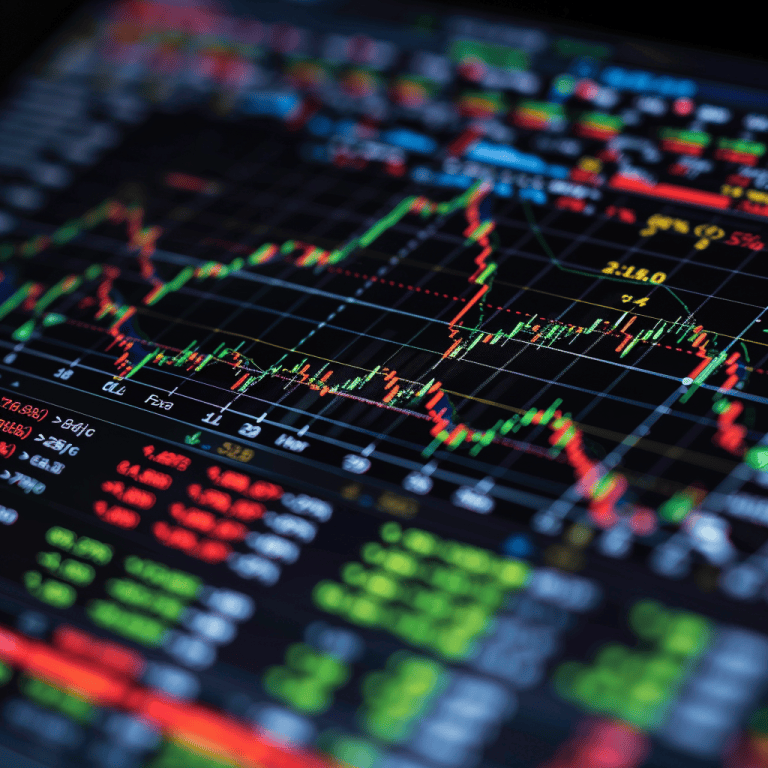
Understanding Forex Spreads: Key to Trading Profits
Ever wondered what keeps the wheels of the Forex market spinning? It’s not just about buying low and selling high; […]

Ever wondered what keeps the wheels of the Forex market spinning? It’s not just about buying low and selling high; there’s a crucial component that plays a pivotal role in every trade you make: the spread. As a seasoned trader, I’ve seen many newcomers grapple with the concept, so let’s demystify it together.
In the world of Forex trading, understanding spreads is as essential as knowing your currency pairs. It’s the bread and butter of trading costs and can make or break your strategy. Stick with me, and I’ll walk you through what spreads are, how they affect your trades, and why they’re an indispensable part of your trading toolkit.
Table of Contents
What are spreads in forex trading?
Spreads are the difference between the bid and the ask price of a currency pair in the Forex market. This gap represents the broker’s fee for executing the trade and is the primary way that brokers make money.
The size of the spread is measured in pips, which are the smallest unit of price movement in Forex trading. Typically, major currency pairs like EUR/USD and USD/JPY have narrower spreads because they’re more liquid and traded more frequently. Conversely, exotic pairs tend to have wider spreads, indicating a higher cost to trade those currencies due to less liquidity.
In my trading experience, I’ve observed that spreads can be either fixed or variable. Fixed spreads remain constant regardless of market conditions, providing predictability in trading costs. However, variable spreads fluctuate with market liquidity and volatility: they narrow when the market is active and may widen significantly during major economic releases or at times of low liquidity.
It’s essential to understand that the cost of the spread must be considered when planning your entry and exit points in a trade. A wider spread means I’ll need a larger price movement in my favor just to break even.
Here’s a quick look at how spreads can affect different trading strategies:
- For scalpers and day traders who make numerous trades in a single day, dealing with lower spreads is a priority because each pip counts.
- Swing traders and longer-term position traders might not be as affected by spreads. These traders can absorb slightly higher spreads as they target more substantial price movements.
Moreover, some brokers offer accounts with zero spreads but charge a fixed commission per trade. It’s critical to weigh the benefits of lower spreads against any additional costs.
By keeping an eye on the spreads, I’m able to manage my trading expenses more effectively and adjust my strategy accordingly. The key is to work with a reliable broker who provides transparent spread information and ideally, one that offers competitive spreads.
The importance of understanding spreads
When diving into the world of forex trading, I’ve found that a thorough grasp of spreads is absolutely vital. Spreads directly impact the cost of trading. Without a nuanced understanding, it’s easy to see potential profits erode due to unexpected or misunderstood transaction costs.
Let’s break it down. For every trade I execute, the spread represents an inherent cost. It’s like a tax on my trading activity—the tighter the spread, the less I pay. Therefore, understanding these numbers is not just beneficial; it’s a necessity for maintaining a healthy trading strategy.
I’ve noticed that many newcomers overlook this detail and focus solely on market movements. However, even the best trade can turn unprofitable if the spread is too wide. That’s why I always check the spread before placing a trade; it’s a quick health check that can save me from unseen losses.
Different Market Conditions Affect Spreads. For instance:
- High liquidity typically leads to tighter spreads
- Major news events can cause spreads to widen significantly
- Trading sessions’ overlaps often result in reduced spreads
By keeping an eye on these factors, I make more informed decisions. On top of that, I always account for spreads when setting up my risk management rules, like stop-loss orders. A wider spread demands a larger stop-loss, increasing my overall risk.
It’s also noteworthy to mention that spreads vary among brokers. Comparing spreads across brokers is one of the first things I do when selecting a platform to ensure I’m not paying more than I need to for my trades.
Don’t forget the impact of Leverage on Spreads. Leverage amplifies my buying power, but it also multiplies the effect of spreads on my trades. That’s why balancing leverage with spread costs is crucial to preventing my account from being whittled down by excessive fees.
By considering all these aspects, I enhance my ability to execute trades more efficiently and safeguard my investments from the sometimes stealthy erosion caused by spreads. This knowledge is a key component of my trading arsenal, ensuring I keep my focus where it should be – on making profitable trading decisions.
How spreads affect your trades
Every time I initiate a trade in the forex market, I’m immediately faced with the reality of spreads. Essentially, these are the transactional costs that I need to overcome to reach a profitable status. Spreads are the difference between the bid and the ask price, and they vary depending on the currency pair I choose to trade.
In a practical sense, spreads determine how much the market needs to move in favor of my position just to break even. For example, if I enter a trade on the EUR/USD pair with a spread of 2 pips, the market must move at least those 2 pips in my direction before I’m not losing money on that trade.
The tightness or wideness of the spread has a direct influence on my trading strategy. Tight spreads are ideal for short-term trading like scalping, where I’m looking for small, frequent profits. This is because the cost of entering and exiting trades is lower, allowing me to capitalize on smaller price movements. On the other hand, with wider spreads, I often have to adopt a longer-term approach, seeking out larger movements to cover the higher transaction costs and still generate a profit.
I’ve also noticed that spread costs become more pronounced if I’m someone who trades more frequently. The cumulative effect of spreads on numerous trades can add up, slicing into my potential profits. It’s like a recurring fee that I need to account for each time the trade door swings.
By tracking and accounting for spreads in my forex trading, I can calibrate my positions accordingly and protect my balance from unnecessary erosion. Examining the spreads offered by different brokers before deciding where to trade is vital to minimize these costs. It’s all about finding the right balance between the spreads and my trading goals, ensuring I’m not caught off guard by these stealthy trading expenses.
Types of spreads
When I’m assessing the forex market, it’s essential to understand there are different types of spreads I can encounter. These various spreads can affect my trading strategy and success in unique ways.
Fixed Spreads are consistent and don’t change with market fluctuations. This stability allows me to predict transaction costs accurately, which can be particularly advantageous during volatile trading sessions. Brokers that offer fixed spreads typically maintain them by acting as a market maker, buying and selling on their own accounts.
On the other hand, Variable Spreads are fluid and can widen or narrow based on market conditions, such as major news events, economic announcements, or changes in liquidity. These spreads often provide lower costs during times of high liquidity but do require me to be mindful of potential trading risks during times of volatility.
A few more types of spreads I’ve come to recognize include:
- Raw Spreads, which are often the tightest spreads available. They reflect the real market conditions without any markup added by the broker. These spreads can be close to zero and often come with a commission fee per trade.
- Seasonal Spreads take into account the time of year, possibly affected by institutional fiscal patterns or public holidays. These aren’t as commonly discussed but can still play a subtle role in my trading decisions.
It’s also important to mention that the spread type I choose must align with my overall trading goals. For instance, a scalper, like myself, might prefer trading with raw or low variable spreads due to the high number of trades executed. In contrast, a long-term position trader might be less affected by spreads and more focused on other strategic factors.
Lastly, I always compare spreads across different currency pairs because some pairs inherently have wider spreads due to their lower liquidity. By analyzing the spreads in relation to the pair I’m interested in, I can make more informed decisions that cater to my trading style and objectives.
Conclusion
Grasping the nuances of forex spreads is crucial for any trader looking to navigate the currency markets effectively. It’s not just about recognizing the cost but also understanding how spreads impact your trading style and strategy. Whether you’re a day trader seeking the efficiency of tight spreads or a long-term investor coping with wider margins, choosing the right type of spread is key to aligning with your trading objectives. Remember, comparing broker offerings and being mindful of spread variations across different currency pairs is essential for optimizing your trading outcomes. Armed with this knowledge, you’re better equipped to manage your trades and enhance your potential for success in the dynamic world of forex.

About the Author
Matthew Hinkle
Lead Writer & Full Time Retail Trader
Matthew is NYCServers' lead writer. In addition to being passionate about forex trading, he is also an active trader himself. Matt has advanced knowledge of useful indicators, trading systems, and analysis.